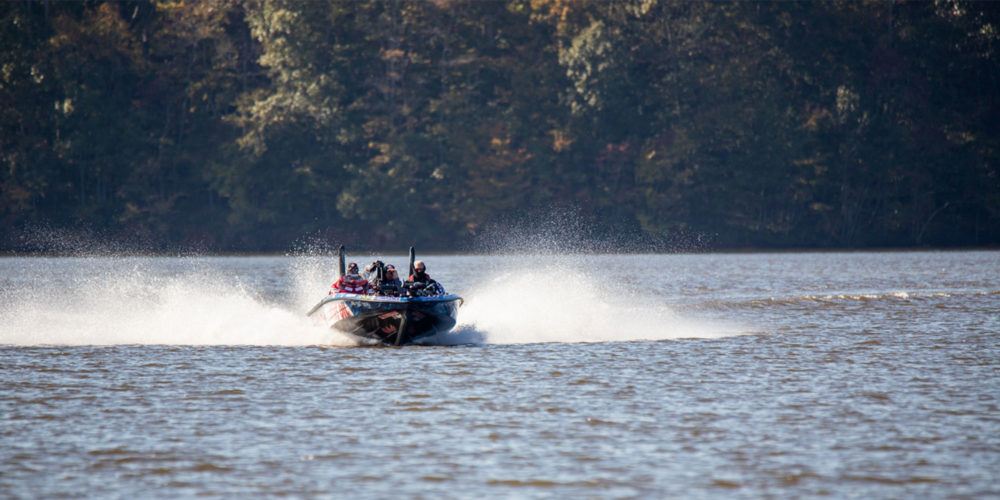PREVIEW: Elimination Round Moves to Abbotts Creek for Day Three

ALBEMARLE, N.C. – For Day 3 of the Elimination Round for the 2019 MLF Challenge Cup, the water on High Rock Lake has fallen enough so that pros can sneak their boats under the Highway 8 Bridge over Abbotts Creek – barely.
The Abbotts Creek arm was intended to be the zone for Day 1 of Elimination, but high water prevented boats from getting under the bridge. This forced MLF officials to move the Day 1 zone over to Second Creek. With the water dropping a few inches per day, enough water has fallen on High Rock to allow low profile bass boats to just barely slip under the bridge. Clearing the ultra-low passage requires taking pedestal seats down and lowering the Power-Poles – and even then, there are only inches to spare.
The Day 3 group is not aware that their zone today is a different zone than the last two days. As they arrive at the Abbotts Creek access, zone maps are handed out showing all of Abbotts Creek in play, from the headwaters all the way to the mouth, nearly 1,800 acres of water total.
Mike Iaconelli is one of the first to receive his map and immediately he begins offering how his fishing brain is breaking down the zone for the day.
“First of all, it’s fall in the Carolinas,” Ike detailed. “Over the years of fishing in this part of the country, one thing I’ve learned about Carolina Lakes is that the fall migration on these lakes is very strong; shad, especially, really make a definitive move up into the backs of creeks. So that’s on my mind.”
“Bridges,” he continued. “I’m always on the lookout for bridges to start on. They offer choke points, which can be really good this time of year with shad migrating through the neck downs. Also, I see the water is high. So the first thing I’m going to look for is watermarks on the banks and on pilings to determine if the water is falling. If I see the water is up and stable, then I’m going to fish more up on the bank. If watermarks reveal the lake is falling, I’m going to fish more out, trying to define the first contour break out off the bank.”
Finally, Ike adds that another important part of the puzzle will be water clarity, but he’ll have to wait for the sun to get a little higher to make that determination.
Several boats away, Jacob Wheeler was also keenly interested in the water clarity.
“Water clarity and water temperature are the first two things I want to see in the ride through,” Wheeler said. “I absolutely love topwaters this time of year; that’s what I want to start with this morning. But if the clarity and water temp are not right, I’m wasting my time with it.”
Specifically, Wheeler notes that if the water temp is above 60 and he can find water with some visibility, he will definitely make topwater lures his starting point. But if it’s colder than 58 degrees and the visibility is limited to just a couple of inches, then he has other plans.
“That’s why water clarity is so key,” he offered. “If it’s too dirty for topwater, then I have to start looking at something that moves more water or produces more vibration; then I start thinking spinnerbait, Chatterbait or crankbait. Quickly matching the vibration and action of your lure to the water clarity is so key to getting off on the right foot in this format.”